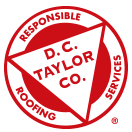Heavy Snow: Can Your Commercial Roof Handle the Load?
When the flakes fly and the snow just keeps coming, you might be worried that your low-slope roof can’t handle the weight. We consulted our team of experts and FEMA’s Snow Load Safety Guide (FEMA P-957 / January 2013) to give you some guidance.
Understanding Snow Load
When a building is designed and built, engineers factor the structural load – both dead load and temporary load (e.g. with the weight of snow). Ground snow load isn’t the same as roof snow load. According to FEMA, roof snow load takes into account ground snow load value as well as the importance, occupancy, and use of the building; wind exposure; roof slope; roof shape; roof obstructions; and thermal condition of the building. It also accounts for geography, which also influences the weight of snow (not to mention wet vs. dry snow).
Snow load is easier to figure on wide-open, relatively flat roofs that are free of obstructions. Snow accumulates more evenly across those types of surfaces. Where it’s less uniform, are on roofs with protrusions, equipment, etc. Just a few inches of snow and high winds can easily result in a five-foot drift on the aforementioned roof scenario. Places where snow accumulates, and drifts include the following:
- Parapet walls.
- Roof vents.
- Roof curbs and penetrations.
- HVAC equipment.
- Solar panels.
Large drifts create an uneven snow load.
Another factor that impacts snow load is insulation. The more insulation applied as part of the roof system, the less likely it is that heat from the building will melt the bottom layer of snow.
The Likelihood of Roof Collapse
FEMA identifies many factors that can contribute to the risk of roof collapse from snow, including a snow load that exceeds the designed load, drifting (uneven load), and insufficient or improper design. The condition of the structural members is also a precursor. If the structural members are corroded, deteriorated, or damaged, their ability to bare the load is compromised.
Older buildings constructed before drifting snow was addressed in building codes in the 1970s-1980s may also be more susceptible. The addition of rooftop equipment, a recover over an old roof, etc. combined with heavy snowfall could push the structural integrity to the limit.
When to Remove Snow from the Roof
If you know the snow load of the building, and snowfalls make you suspect it is close to the capacity of the roof structure, it’s time to act.
Have a plan for where the rooftop snow is going to go and who’s going to remove it. Hopefully, you’ve already marked rooftop hazards that can be hidden under the snow. Workers may be oblivious to snow-covered low curbs, conduits, gas lines, vents, and skylights on the roof. Before snowfall occurs, mark these rooftop hazards with cones or neon orange snow flags. These visual cues can help prevent rooftop workers from accidentally tripping on, stepping through them, or falling from the roof.
Don’t get your shovel or snowblower. Leave rooftop snow removal to professionals. Your roofing contractor knows how to work safely on the roof and can remove the snow without causing damage to your roofing system.
Be Knowledgeable and Prepared
If you’re concerned about the potential for collapse, we second FEMA’s advice: have a licensed engineer conduct a building inspection and vulnerability assessment. This will help you gain a solid understand of the building’s structural capacity.
Need help clearing snow from your commercial/industrial roof? Call D. C. Taylor Co. at 319.731.4118.






 Previous
Previous